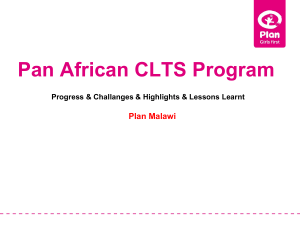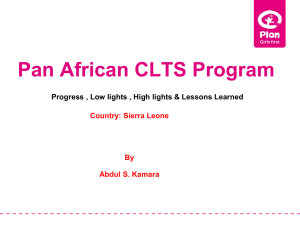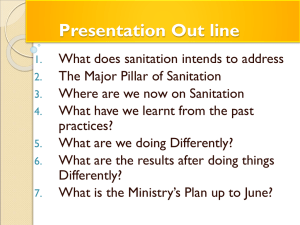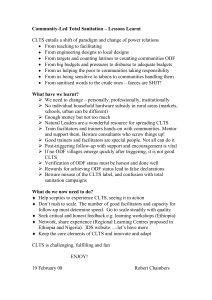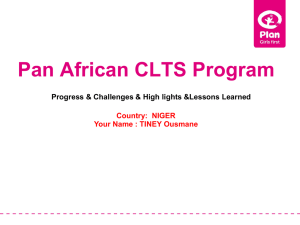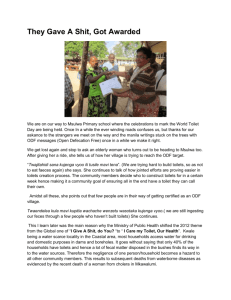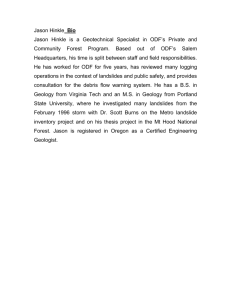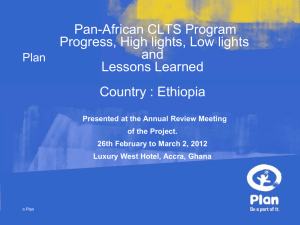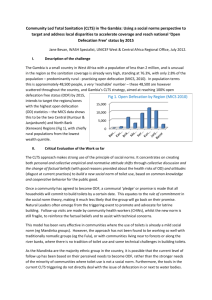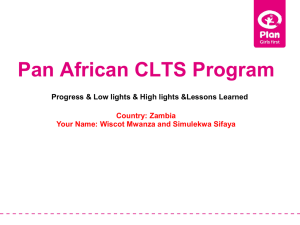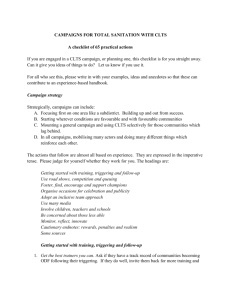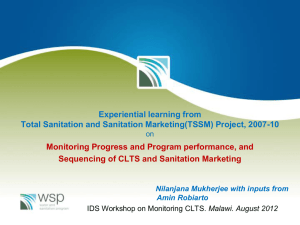Uganda - Community-Led Total Sanitation
advertisement
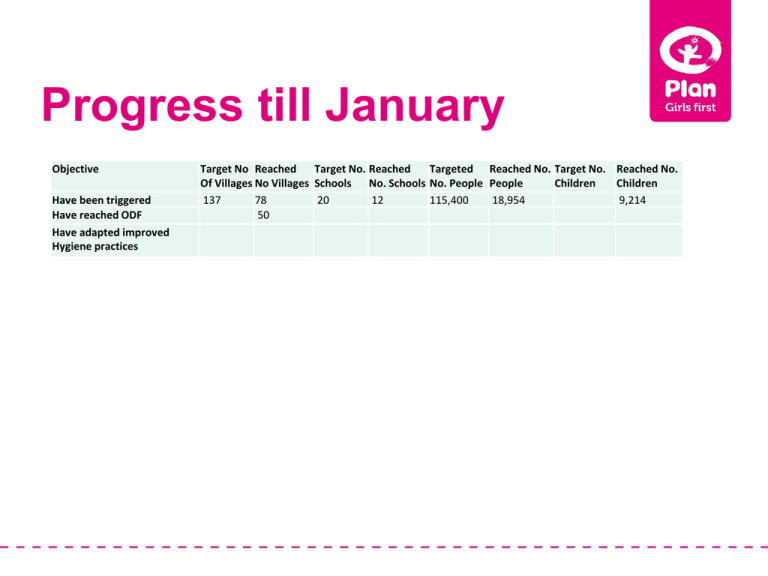
Progress till January Objective Have been triggered Have reached ODF Have adapted improved Hygiene practices Target No Reached Target No. Reached Targeted Reached No. Target No. Reached No. Of Villages No Villages Schools No. Schools No. People People Children Children 137 78 20 12 115,400 18,954 9,214 50 Low Lights • Lack of access to safe water in ODF communities impedes the practising of hygiene behaviors. • Institutionalization of CLTS and up scaling beyond Plan’s operational areas. Low Lights • Latrines collapsing in ODF and triggered villages due to loose, collapsing soils and heavy rains. Low Lights • The big number of elderly people in some communities in Luwero has slowed the ODF attainment process. Remedies: • A one year grant was secured with support of UKNO to enhance access to safe water in ODF communities. • Advocated and supported three districts to utilize the new sanitation funding to scale up CLTS in non Plan operational areas. • Linked masons to ODF villages, retrained masons in latrine designs suitable for collapsing soils. Remedies • The VHTs have embarked on supporting the elderly to construct the latrines through self help. High Lights • 50 villages have reached ODF out of 78 triggered villages in the two districts. • Nominated to represent UWASNET members on the Global sanitation fund steering committee. High Lights • Contributed to the development, printing and dissemination of the national CLTS manuals. Lessons Learned: • Planning for CLTS implementation should be comprehensive and include monitoring, verification, and follow up for up to two years after ODF to ensure sustainability. • To achieve massive impacts in sanitation, responsible government line ministries have to be in the lead. Lessons Learnt: Effective and exemplary leadership of the community resource persons reinforces positive sanitation behaviour change and consequently attainment of ODF status. Lessons incorporated in CLTS Program • Post monitoring has continued in ODF villages as well as linkage to VSLA and masons. • Signed MoU with Ministry of Health at the national level as part of the efforts to scale up CLTS and to institutionalize CLTS and sanitation marketing. • The community resource persons have been involved in all project activities especially monitoring and sensitization
